Desert murmurations
RAHAT, Israel, February 4, 2015 – I’ve been watching out for them for a month now. Half a billion birds migrate here each year during the European winter, and among them the starlings are unique. They come in a cloud, tens, hundreds of thousands of them, and if you are lucky enough to be in the right spot, just before sunset, you can see them dance.
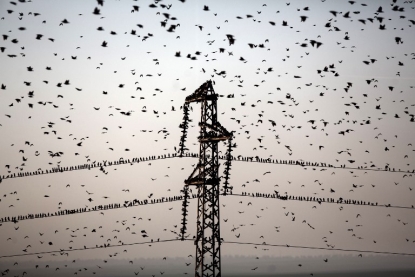 (AFP Photo / Menahem Kahana)
(AFP Photo / Menahem Kahana)A ‘real’ nature photographer will hide in a bush for 10 days for a shot of a rare bird. At AFP we don’t have time for that kind of thing, but my job does take me all over the country. So throughout January I keep my eyes open for the places they settle to roost, usually in bushes in a valley or canyon.
When a Hezbollah missile attack on an Israeli convoy kills two soldiers in the north, I spend two days up there shooting the story – and watching out for birds as well. I find one spot in the Golan Heights, another in the Jordan Valley.
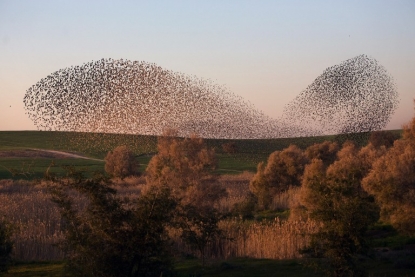 (AFP Photo / Menahem Kahana)
(AFP Photo / Menahem Kahana)But only at the very end of January do I find a really big group of starlings, near the Bedouin town of Rahat in the Negev desert, the site of a gigantic garbage site where I had first spotted the starling murmurations last year.
Clashes had broken out in Rahat after two men were killed in a Bedouin village. I am sent to cover the story, and when my work is done I head out to the fields.
Once I find the place, I have to get the time right. I know to be there from around four pm – travelling back and forth from Jerusalem, first on another story then just for the birds. The starlings dance before sunset, but not every day, and the exact time can vary with the weather. Or they dance somewhere else and then come back to roost.
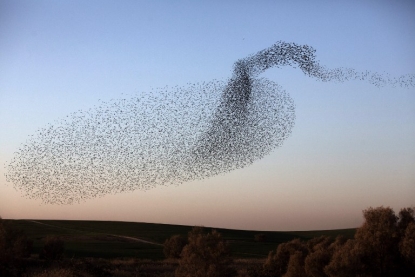 (AFP Photo / Menahem Kahana)
(AFP Photo / Menahem Kahana)On my seventh or eighth visit, they put on a really big performance around 15 minutes before sunset, right before my eyes. I am lucky to have a good show two days running – first near the garbage site, then five kilometres way at their roosting site.
They move so fast, you have to be very, very quick, to be ready with the correct lenses and switch lens instantly if they suddenly swoop near you.
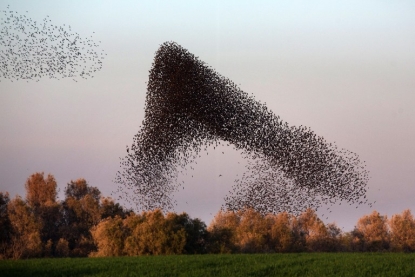 (AFP Photo / Menahem Kahana)
(AFP Photo / Menahem Kahana)Last year I captured something unique - a starling “heart” that made front pages everywhere since by chance it happened to be two days before Valentine’s Day. But this time is amazing too: two dark balls, swelling and swirling, joining together in the shape of a soldier, a skeleton, a big fish, a boomerang, an elephant man…
They’re dancing just as the light fades – but sometimes that makes for a very dramatic light, bluish-red with the sunset. One of my pictures is long-exposed, maybe half a second, and the blurred lines make the birds look like falling stars against the moon.
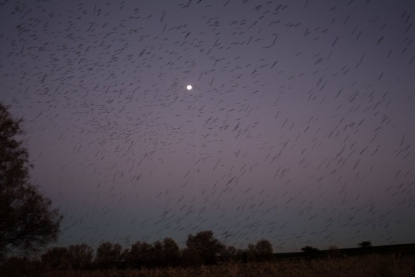 (AFP Photo / Menahem Kahana)
(AFP Photo / Menahem Kahana)Then suddenly, in the space of a second, they dive as one into the bush to their roosting place. The branches are black with them.
The trick with the starlings is to be first to find them. The moment you publish a picture, the magic is over. Sure enough, this time too, crowds of people turn up the next day to watch the starlings dance. I’m not the only one who’s crazy about this!
Menahem Kahana is an AFP photographer in Jerusalem
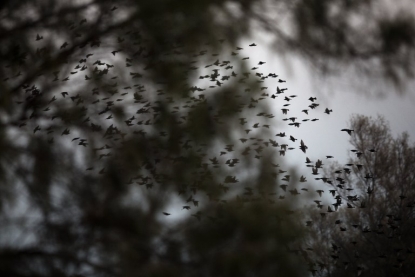 (AFP Photo / Menahem Kahana)
(AFP Photo / Menahem Kahana)

